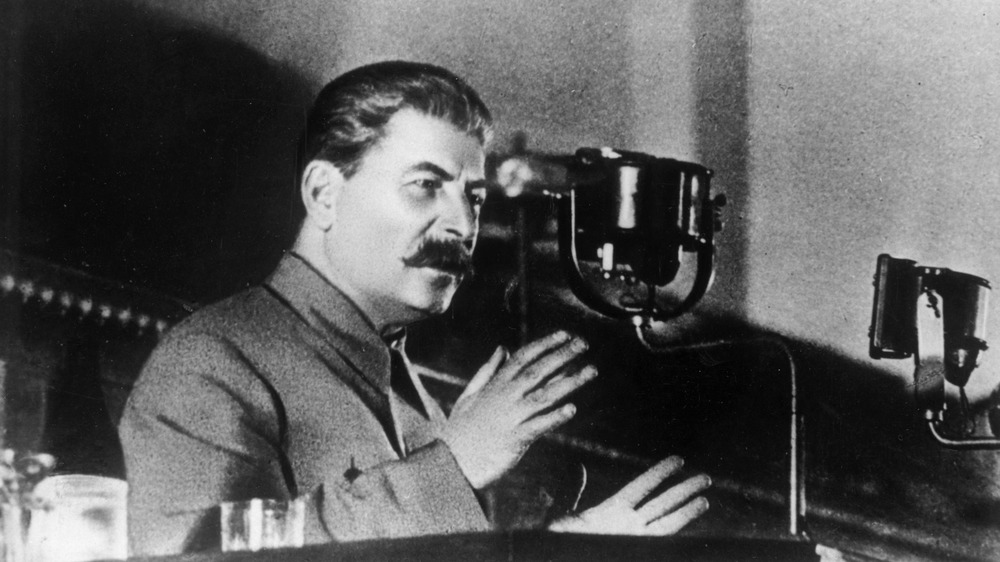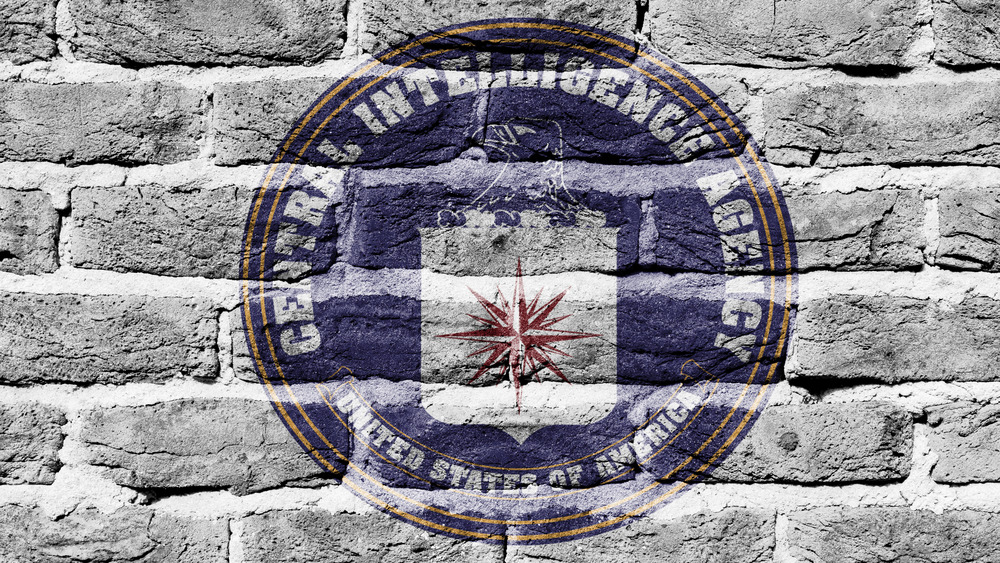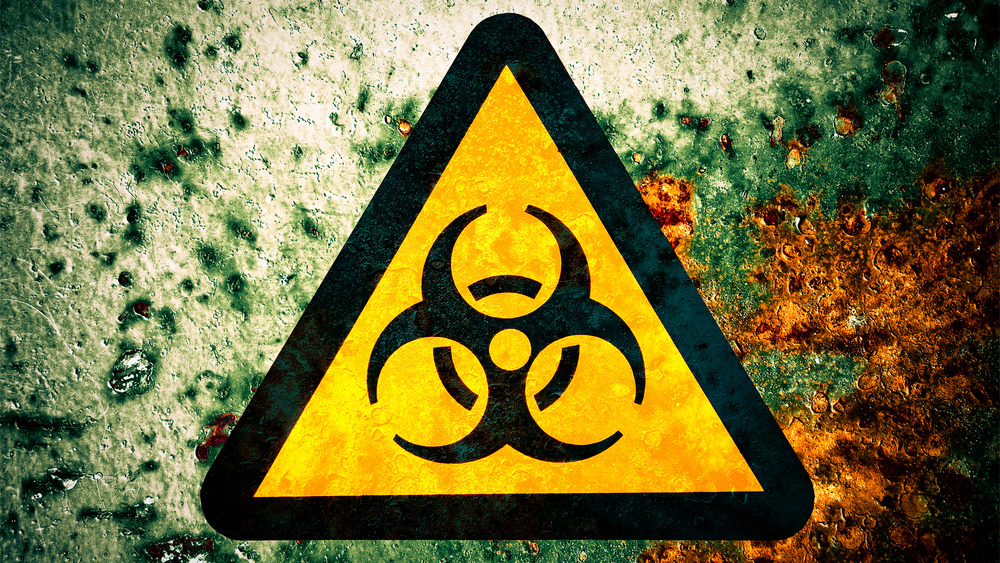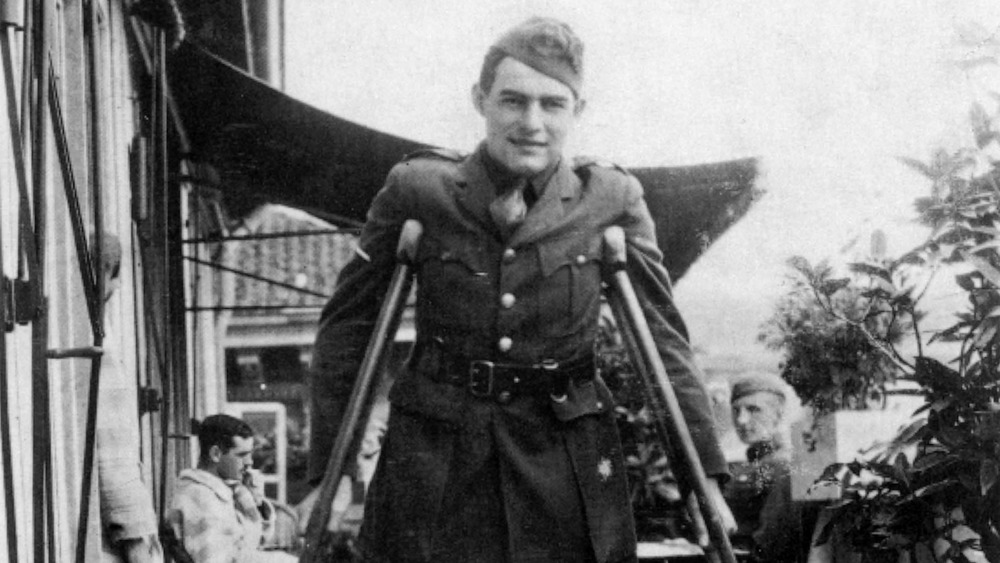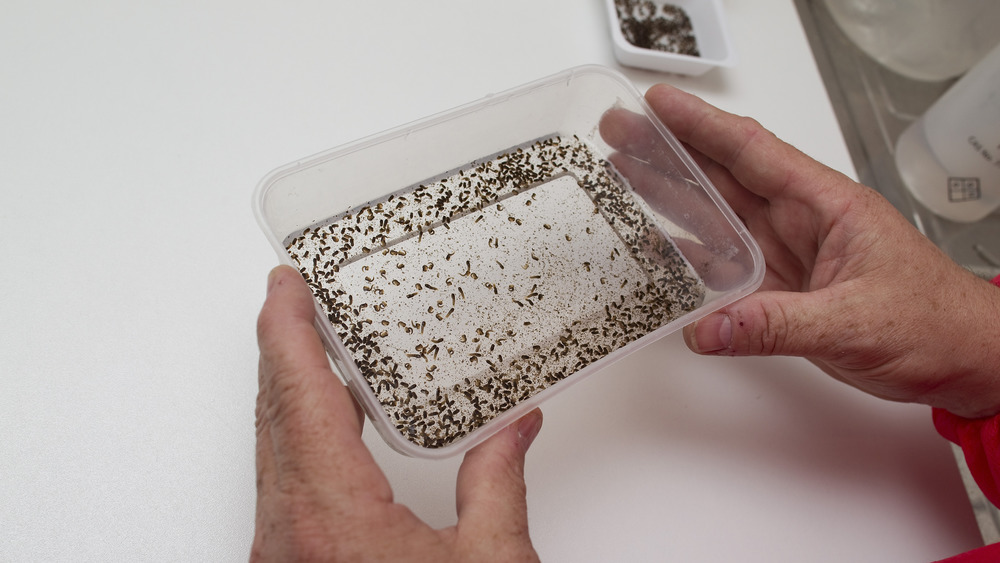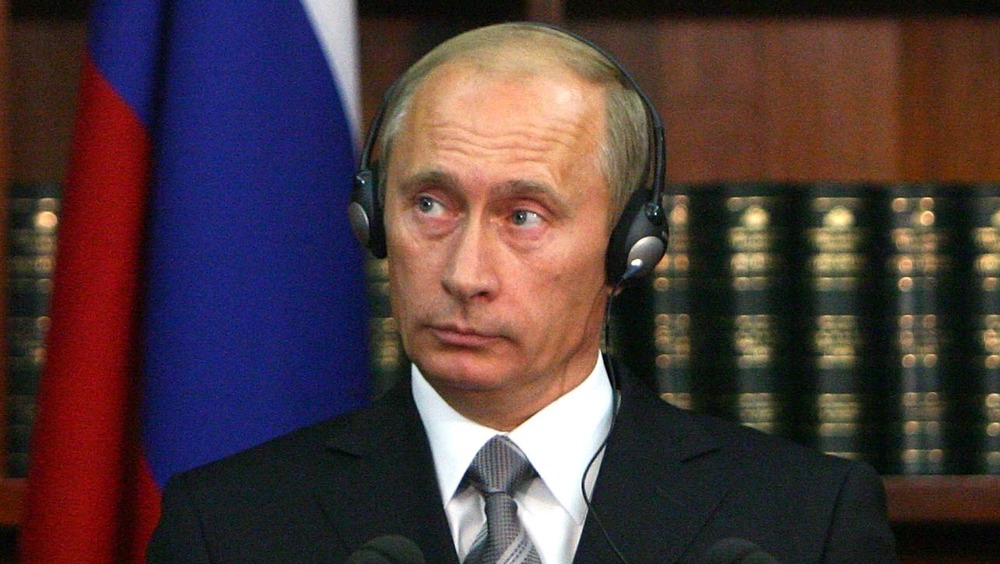The KGB Was More Messed Up Than You Thought
Correction 03/02/22: A previous version of this article claimed that the Soviet Union invaded Czechoslovakia in 1968 to overthrow Antonin Novotny and that American hockey player Buzz Schneider had a gun on him during a game due to KGB ties. It was Alexander Dubcek that was overthrown, not Novotny. And Schneider discovered the gun on a Soviet player, who was a KGB agent.
The KGB is a three-letter acronym most people associate with dark alley espionage, heavy Russian accents, and Vladimir Putin. But do all those scary and downright ominous spy stories have any merit?
Considering the KGB spawned from the brainchild of one Joseph Stalin, a genocidal dictator, the organization's potential for destruction was imminent. Though it's hard to confirm many of the KGB's tactics due to the illusive nature of its existence, former operatives of the organization have come forward throughout the years with some deeply seeped tea.
One example is Boris Karpichkov, a once-double agent of the KGB, who admitted to having been trained to literally "kill with his bare hands." Methods of the secret police included chemical warfare, creative wiretapping, and even poisoning their own officers. During the Cold War, it was hard to trust diplomats, journalists, or even business owners, some of which were KGB spies.
In a nutshell, if a rumor you've heard about the KGB sounds batsh** insane, it's likely true.
The beginning of the KGB
The KGB was born from many previous secret service organizations within 20th century Soviet history. The Bolshevik Revolution completely transformed a global powerhouse country once ruled by czars. After the revolution, the young Soviet leader Joseph Stalin rose to power.
Stalin expanded the use of "secret police," and in 1934, he officially became the People's Commissariat for Internal Affairs, otherwise known as the NKVD. Stalin used the organization to both build and sustain his power and to ensure the maintenance of a strong industrialized communist regime. In order to achieve his ends, Stalin orchestrated some pretty horrific means. The NKVD was used to instill mass fear throughout the country, and its citizens referred to the organization as the Great Terror. He orchestrated mass famine and work camps, allowing his own people to suffer greatly. Stalin was also known for his "purges" where he habitually used the NKVD freely as a way to eliminate anyone who showed a hint of disloyalty, or whom he considered a threat.
Once Stalin died and Nikita Khrushchev took power, the days of the NKVD died alongside him. Unfortunately, his organization still had many fans, and the Main Directorate for State Security (GUGB) was formed in its place. The KGB replaced the GUGB in 1954. Its mission was to act as the "sword and shield of the Communist Party," according to the KGB Espionage Museum.
Stalin's Great Terror lived on, simply under many different acronyms.
The Russian spy race (CIA vs. KGB)
By the 1980s, the KGB (which translates into Committee for State Security) was arguably the most powerful secret governmental operation on the planet. The organization's crusade to silence anti-communist sentiment stretched across multiple occupations, including technology and the military, and employed thousands of Soviets. The KGB even recruited officers in the west in order to divulge location and activity intel. They also set up camp in the United States, as depicted in the popular FX TV drama The Americans.
In the 1970s, an antenna went undetected in the U.S. embassy's chimney. It was later divulged that a listening device had been successfully incorporated inside the embassy's typewriters. This went undetected for a whole eight years. Imagine how much intel the KGB gathered within that span of time.
But the KGB's espionage monopoly wouldn't last long. The Central Intelligence Agency quickly became a formidable rival to the KGB, particularly during the Cold War. Their weapon of choice? A silent-but-deadly cyanide capsule, otherwise known as the L-pill, that would kill an enemy instantly. The potion was sometimes hidden inside pens.
It's very possible that the CIA prevented a nuclear attack on Americans with intel they gathered from Moscow. Author David E. Hoffman writes in his book, The Billion Dollar Spy: A True Story of Cold War Espionage and Betrayal, that intelligence discovered an R-12 medium range missile that became the "key ingredient in decision making as President Kennedy stood up to Khrushchev during the Cuban missile crisis."
Recruitment techniques
If a citizen had a business, position of power, or personal attributes that the state found desirable, the KGB would try a variety of methods to determine whether they sized up to carry out their undercover tasks. They would then promise the individual special favors for service, particularly favors only accessible through the organization.
Vladimir Putin, for example, who spent his career recruiting KGB members in the 1980s, would seek out "East Germans who had a plausible reason to travel abroad," according to a report by David Hoffman for The Washington Post. Basically, if you had a cover story, you were in. Putin would recruit technicians, for example, to go on "business trip[s]" to the west in order to steal their technology. The KGB also recruited journalists to sow seeds of disinformation within certain countries.
Many well-known figures were approached to become KGB operatives in order to uncover sensitive information the general public wouldn't be aware of. The KGB would also place sleeper recruits in foreign countries as illegals who didn't have a traceable past. These agents would possess "legends" to explain their lack of government identification.
Installing communist governments around the world
The KGB assisted in orchestrating "puppet" Communist governments throughout Eastern Europe and Afghanistan, enabling the Soviets to repress countries, while also establishing their own police within the occupied territories.
During the Prague Spring, the KGB instilled fear into the Czech people that they would fall victim to a coup. By the mid-1960s, Czechoslovakia was under new management, and the KGB wasn't pleased. Alexander Dubcek, a liberal-leaning politician who championed freedom of speech, replaced fascist Antonin Novotny. The Soviet Union invaded Czechoslovakia in 1968 to overthrow Dubcek. He was eventually replaced with more of an ally figure, Gustav Husak, who promised to restore communist ideals and cooperate with the Soviets.
"Just as under the Nazis, acts of courage after 1968 were in the minority and most people reluctantly conformed and tried to survive," student leader Jan Kavan said about witnessing the Prague Spring in real time, as told in an expose by The Guardian.
The KGB led a similar operation in Afghanistan in a Soviet war that began in 1978. The organization led many attempts to infiltrate the Afghan government, including trying to extradite three Afghan cabinet ministers out of their own country, known as "Operation Agat."
The fake news machine
Dezinformatsia, a word invented by Joseph Stalin, boiled down to spreading false reports that were specifically intended to mislead the public. These disinformation campaigns were intended to control a mass group. Once the group believed the lie, they could be easily controlled. Apparently the idea originated somewhat from Grigory Potyomkin in the days of Catherine the Great. The KGB took great advantage of the tactic, and unfortunately it worked much too well.
The method was part of the KGB's active measures doctrine, which included media manipulation, counterfeiting documents, and murdering dissenters. These measures were utilized, as described by KGB Maj. Gen. Oleg Kalugin, "to drive wedges in the western community alliances of all sorts, particularly NATO."
This tactic continued well into the Cold War, where it was referred to as "black propaganda." Operation NEPTUN, for example, was carried out in 1964 to insinuate that the United States and other western power players supported the Nazi regime.
One of the most shocking and widely circulated disinformation campaigns by the KGB, however, was concocted in the year 1983.
Operation INFEKTION
A campaign officially titled Operation INFEKTION was aptly named. The KGB used a pro-Soviet Indian newspaper to spread the shocking content that the U.S. would soon be held responsible for purposefully infecting the world with the AIDS virus. Just a little white lie, right? No big deal. According to these fabricated sources, AIDS was the product of a lab experiment intended for biological warfare by the Pentagon.
How did they convince the public of such a scandalous accusation? Pretty easily, as alarming as it may be. The publication cited an anonymous letter from a sort-of whistleblower who claimed they were a "well-known American scientist and anthropologist," according to a report in The Washington Post. "Now that these menacing experiments seem to have gone out of control," the article continued, "plans are being hatched to hastily transfer them from the U.S. to other countries, primarily developing nations where governments are pliable to Washington's pressure and persuasion."
Not only was the report published in India, but it appeared in a Soviet weekly paper and a British tabloid. Within four years, it had circulated within reputable sources of more than 50 countries. Many credible people attempted to debunk the blatantly untrue accusation, but it's pretty hard to contain a fire once it spreads.
Apparently this conspiracy theory stood the test of time. In 2005, it was estimated in a study conducted by The Post's Darryl Fears that nearly half of the African-American population in the U.S. believed the disease was indeed man-made.
The strange case of the hollow nickel
In 1953, a nickel was found in Brooklyn that came apart. Inside was an encrypted message along with a microphotograph. A newsboy had collected it while delivering papers when he noticed something different about it. When he rested the nickel on the middle finger of his hand, it appeared lighter than usual. When the boy dropped the coin on the floor, a tiny photograph fell out that possessed a series of numbers.
The coin would soon be collected by the FBI, who launched an investigation into the origins of the coin and traced it back to the KGB with the help of a former spy, Reino Hayhanen, who wanted asylum in America. But it would take years to solve the case.
Who was the culprit? A Russian citizen who had been living illegally in the U.S. for over a decade. He had many false names, but his real name was discovered to be Rudolf Ivanovich Abel, who was of course, working for the KGB. Abel was found guilty of espionage in a New York City court, according to FBI.gov. He was ultimately exchanged for an American prisoner in the Soviet Union– pilot Francis Gary Powers.
And to think Abel was only caught because a newsboy noticed something strange about a nickel.
Weird stories about unexpected people with KGB ties
The most unlikely of spies were later revealed to have worked for the KGB. Author of international fame, Ernest Hemingway, was apparently a '"failed" KGB spy who never provided any useful intel. His code name was agent Argo, and he was recruited in 1941 while in China. The Nobel prize winner apparently "repeatedly expressed his desire and willingness to help" the KGB, according to a report in the publication of Spies titled The Rise and Fall of the KGB in America.
In 1980, U.S. Olympic hockey player, Buzz Schneider, found a gun on one of his opponents. The player's mission was not to kill anyone but simply to keep members of the Soviet team "from defecting the West," according to Gawker. It's worth mentioning that the entire Soviet Olympic hockey team was on the KGB's payroll as well that year.
Biological war
The KGB had long dabbled in biological weaponry, including creating strains of anthrax-causing bacterium and placing poison in places of mass transport, buildings, or residences. This practice was at its most dangerous during the Cold War.
Soviet biological warfare agency Biopreparat relied on the KGB as their main supplier of raw material and was known within the agency by code name "Capturing Agency One." Agents across the globe would collect powders, cultures, and fluids to reconstruct them in their lab to decipher how to overcome their toxic formulas.
In 1979, spores of anthrax mysteriously disappeared from a Soviet lab in central Russia, killing at least 66 and up to 105 people, as well as an unknown number of animals, according to Science Alert. Investigators discovered this strain of anthrax had been modified by the Soviet Union. The lab it was stored in was marked as Compound 19, near Sverdlovsk. It was later revealed that the modified bacterium had escaped through air filters that had been replaced and not installed correctly.
The event became known as "biological Chernobyl" and is still one of the largest inhalation anthrax outbreaks in history. Many more people could have been fatally exposed if the wind had been stronger at the time of initial exposure. There is no reason to believe Compound 19 ceased their experiments, even after the tragedy.
The mysterious case of the Moscow Embassy Microwaves
The Cold War bred many unique and creative espionage techniques, some of which involved using radiation in a variety of ways.
People warn against radiation poisoning from microwaves, but try mind control and behavior modification. From the years 1953 to 1979, the USSR infiltrated the United States embassy in Moscow by releasing low level non-ionizing radiation through microwaves.
What is known as the "Moscow signal" case was kept under wraps for nearly two decades until embassy officials and staff were notified. While some were concerned the microwaves had surveillance technology, others were more concerned for their health. The microwaving of the embassy didn't officially cease until 1988. By that time, thousands of Americans had been exposed. Many employees suffered from cancer and high white cell counts as a result.
In Havana, Cuba, a similar situation possibly happened at the U.S. Embassy as late as 2017, when employees began complaining of dizziness, headaches, tinnitus, and fatigue, reports Slate. Due to Russia's history with Cuba, diplomats suspected that some kind of "sonic weapon" may have been the culprit. As a result, the Trump administration extracted an estimated 60% of the embassy's staff from Cuba.
Vladimir Putin -- the making of an evil genius
Vladimir Putin was a mid-level KGB agent for 17 years before he became Boris Yeltsin's prime minister in 1998. He began his career as a KGB intelligence officer in 1975 and retired with the rank of colonel in 1991 after the collapse of the Soviet Union, says History.
During his stint with the KGB, one of his biggest assignments was extracting technologies from the West.
Putin has never actually campaigned for office, according to The Washington Post. He has been Russia's president or prime minister ever since the late 1990s. Critics worry that his experience with the KGB has influenced the way he governs. The intelligence he had gathered within his nearly two decades as an agent and colonel had made him paranoid, and there has been hard evidence that he has used KGB tactics to infiltrate the Ukraine in 2005. And of course, he has been charged with using "dezinformatsia" to influence the results of the 2016 United States presidential election.
The end of the KGB?
A coup officially ended the security organization in November of 1991 when the USSR fell and was replaced by the domestic Federal Security Service, the FSB. But it was never fully dissolved, only evolved, much like organizations before the KGB. The hammer and sickle was replaced with the tricolor of the Russian Federation.
The FSB resides within the former KGB's headquarters in Moscow, according to History, and it's no secret that many assume the organization carries out the same tasks today.
The Cold War may have ended, but under Vladimir Putin, Russian spies are still up to all their old tricks of the KGB playbook. In 2006, former Russian spy Alexander Litvinenko was poisoned with polonium-210, which was believed to have been slipped into his tea. In 2018, there was an attempt on former agent Sergei Skripal's life in the United Kingdom, which he luckily survived. And most recently, the FSB is widely being held responsible for the poisoning of Russian Putin dissident, Aleksei Navalny, who is currently a political prisoner in his own country.

